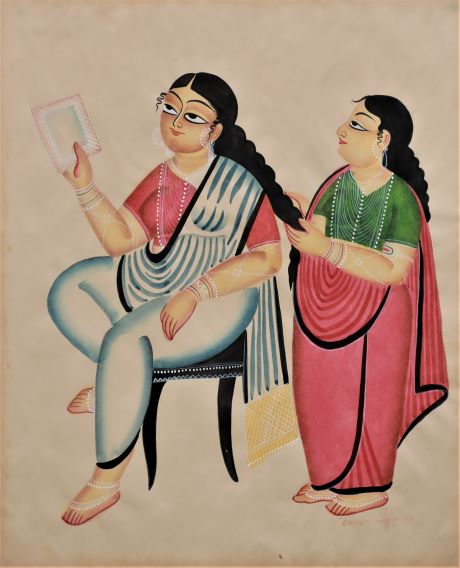
Kalam Patwa, Untitled, Water Color on Paper, 23.25 x 19.5 inches
Khalighat Art
Kalighat painting originated in 19th century in the Kalighat region of Kolkata, West Bengal. Like most indigenous art forms, these paintings depict scenes from mythology and prevailing legendary narratives, to mundane occurrences. Kalighat 'patuas' or painters created these works of art to make a living. They would paint scrolls up to 20 feet in length, favoured singular pictures with minimum figures and a plain background, painting with basic colour combinations. The practice began to die out in the early decades of the 20th century owing to the increased demand for cheaper, commercially produced images. It is marginally practiced in Midnapur city and Birbhum district of West Bengal, kept alive by contemporary artists. Employing organic dyes, like 19th century patuas did, the paintings thus created focus on more secular themes and current events intermingled with religions depictions. Kalighat paintings are in various collections like at V&A museum, with one of the largest collections, Penn museum, Cleveland Museum of Art, amongst other national and private collections.

